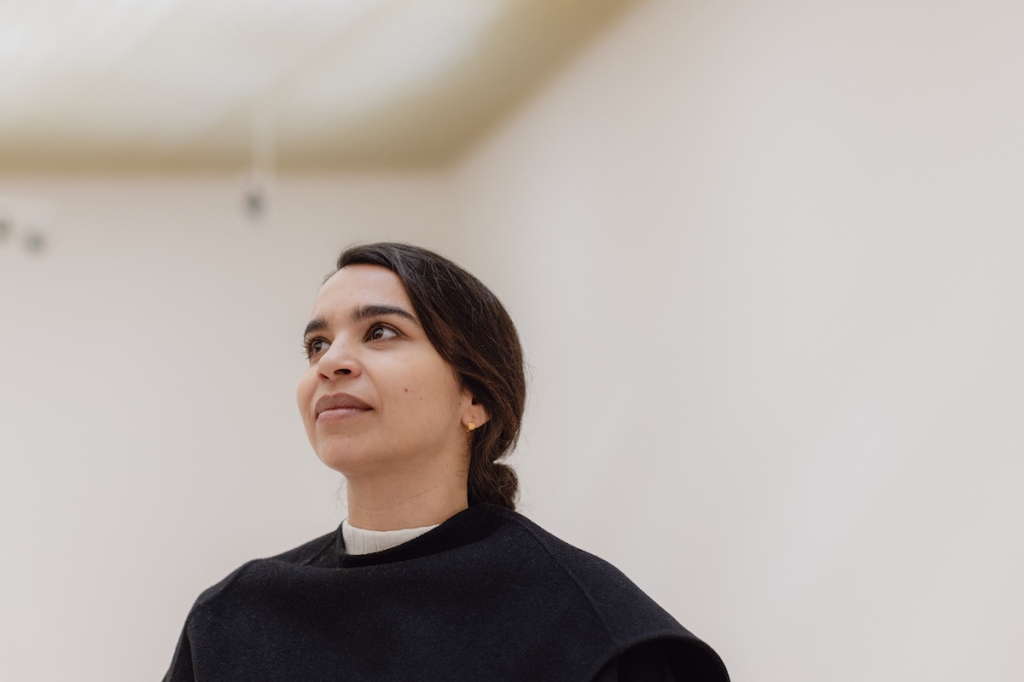5 Best Booths at the Dallas Art Fair, From Cowboy Rococo to Intimate Visions of Aging
“If you look at the way Texans dress, you know what kind of work they like,” one attendee of the Dallas Art Fair said of other buyers present at the VIP preview. Which is to say, bold and colorful as a tropical bird. Gallerists bringing work to the Dallas Art Fair pick works accordingly, bringing big, representational works, mostly paintings—you’ll see little sculpture and nearly no photography at the DAF.
Founded by John Sughrue and Chris Byrne in 2009, DAF is one of the most successful, independent fairs in America, bringing together collectors and artists to an often under-appreciated art scene. But like other regional fairs, such as Expo Chicago, things have been a little quieter this year, though anything looks quiet in comparison to the boom the art market went through in the past two years. Twelve works were acquired by the Dallas Museum of Art through the Dallas Art Fair Foundation Fund. Below are our pick of the standout presentations.
-
Valley House Gallery and Sculpture Garden

Image Credit: Shanti Escalante/ARTnews Valley House Gallery and Sculpture Garden is the oldest contemporary art gallery in the city, boasting nearly 70 years of service. On view at their booth is an eclectic mix of exciting artists and exceptional, imaginative work.
Works by artists like Amy Werntz and Carol Cook look deeply at an oft-ignored subject: the elderly. Werntz’s detailed painting of an elderly bell ringer for Salvation army and Cook’s sculptures of wheelchair-bound senior citizens compliment each other in grace and subject in one corner of Valley House’s large booth.
A deep focus on depictions of nature is also a recurring theme, from the supple sculptures of David Evertt, to the show-stopping mixed media work Artificial Lures (2008) by Mark Messersmith that depicts a technicolor cross section of a thriving swamp.
Also of note: Two paintings by Miles Cleveland Goodwin, a Mississippi-born artist who delicately makes haunting and beautiful tableaux. Goodwin draws from his Southern upbringing, offering a harsh, sublime view of the landscape and its people. Angel at His Deathbed (2023) for example, shows a surreal mourning scene that is difficult to read. Two Black men, one laying down, the other sitting at the head of the bed, rest with their eyes closed. A baby crawls across the blanket while a white man touches his ear gently, gaze blank. All of the subjects lack a definitive gaze except a Black woman sitting on a chair at the foot of the bed. She sees all too much.
-
Jesus Lugo at Drexel Gallería

Image Credit: Shanti Escalante/ARTnews Jesus Lugo’s densely populated paintings at the booth by Monterrey-based Drexel Gallería immediately catch the eye. The pieces belonging to his sprawling series “Imaginary Museums”, which took six years to complete. They individually tackle a different artistic movement and are jam-packed with bodies: anthropomorphized hares and foxes, historical figures and laypeople alike playing out personal dramas. The series debuted in its entirety at Drexel Gallería in 2022 and was extended past its initial closing date by three months due to popular demand.
-
Mike Shultis at Carl Kostyál

Image Credit: Courtesy Carl Kostyál Mike Shultis’s monumental sculptural paintings of cowboys, on view at Carl Kostyál, may be the best presentation at DAF. Made with found materials such as mannequin legs, zebra pelts, stuffed animals, and leather chaps, Shultis embraces peak maximalism, a sort of American Western Rococo. In Shultis’s excesses, he creates a link between our current age’s luxuries and wealth gap and pre-Revolutionary France, with its own injustices and indulgent ornamentation. He directly references compositions from 18th century works made by the likes of Francois Boucher and Jean-Honoré Fragonard in Booty and La Bete (2022), which depicts a courtesan wearing a knockoff Gucci print bikini. According to a market report, the booth has nearly sold out, with one work, Lone Star (2022), acquired by a Lithuanian museum.
-
Arthur Timothy at Gallery 1957

Image Credit: Shanti Escalante/ARTnews Arthur Timothy only began painting full time in 2018, at 65 years old. Previously, he had worked as an architect and it shows in his work. On view at the Accra-based Gallery 1957, named after Ghana’s independence year and coincidentally, Timothy’s birth year, are three of his large-scale paintings. All three are exteriors of structures, based on snapshots Timothy’s father took and from Timothy’s memories of his childhood in Ghana and Sierra Leone. Each painting is suffused with light and space, depicting the casual grandeur of spare, concrete structures with their tall arches, and houses of corrugated tin and rough brick.
-
Benjamin Styer at Moskowitz Bayse

Image Credit: Courtesy Moskowitz Bayse Ben Styer’s paintings are every book lover’s dream, recalling impressions from children’s literature and folk tales: the nooks and crannies of some small creature’s home, a dark forest holding a castle. His paintings have the air of an illuminated, Medieval manuscript—complete with abstract calligraphy and motifs of Styer’s making—mashed with an episode of Reading Rainbow. With incredible precision, Styer leads us further into a world he’s been steadily expanding with each work and study.
Last year, Styer’s painting Melody For Walk to the Reservoir (2022) was purchased by the Dallas Museum of Art, using the Dallas Art Fair Foundation Fund.


